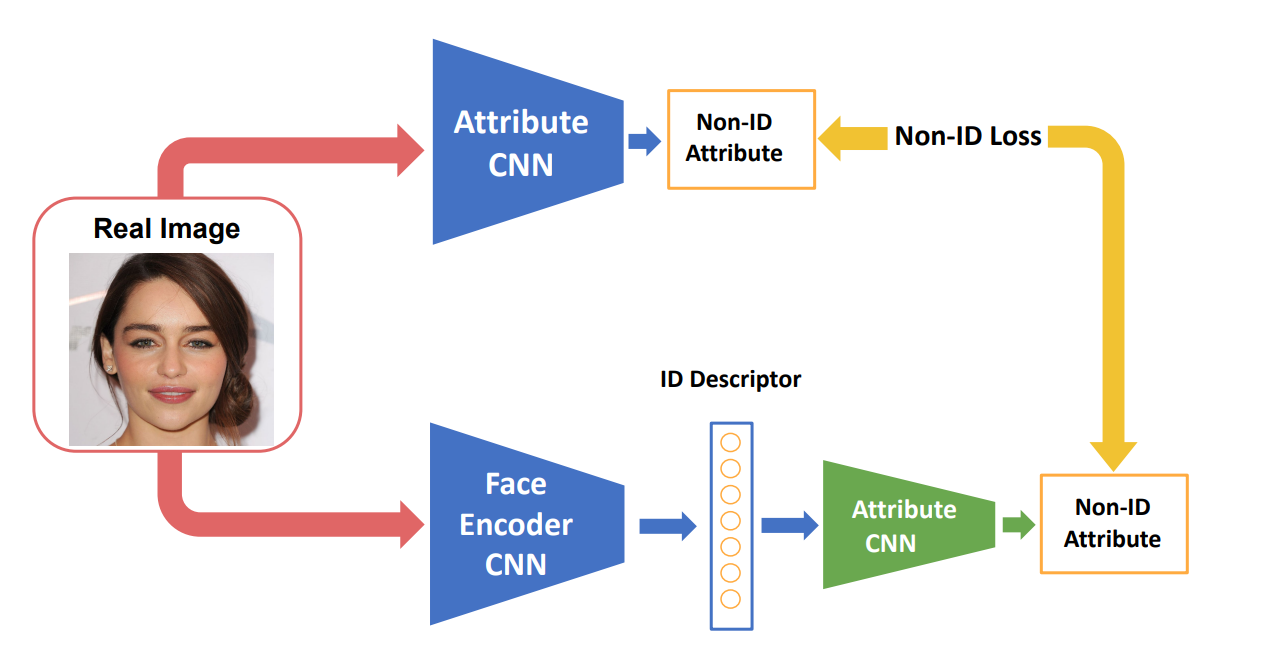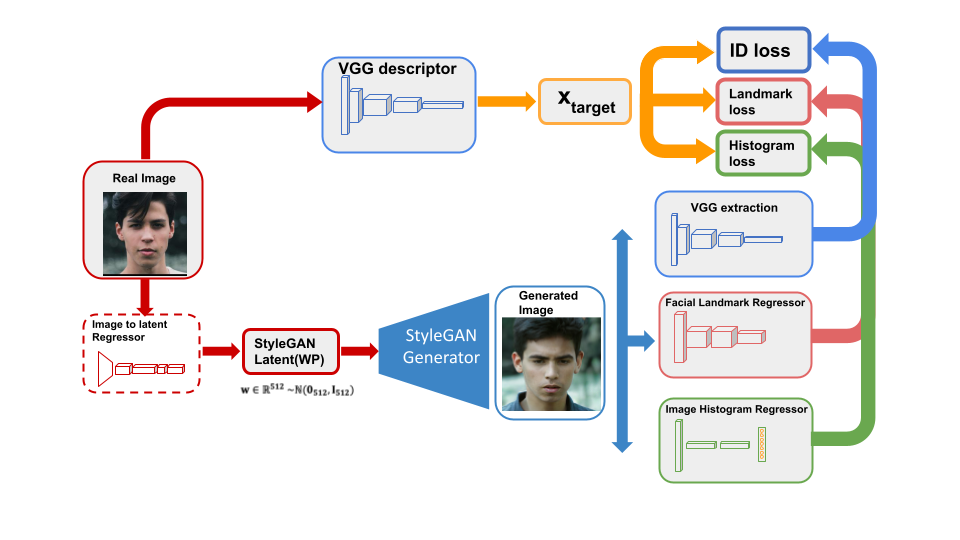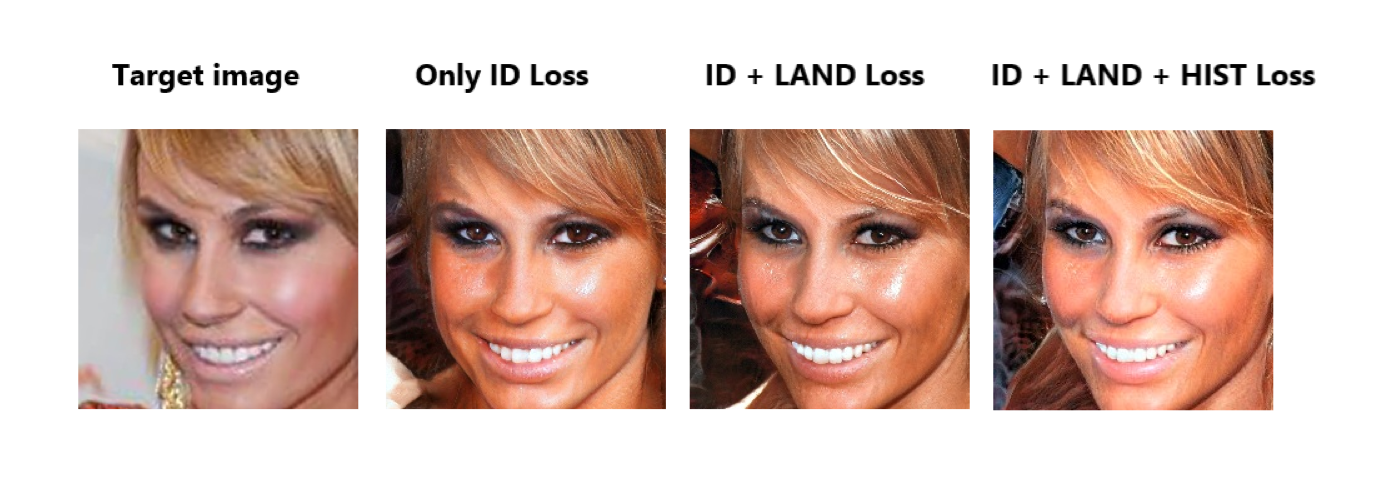ID2image: Leakage of non-ID information into face descriptors and inversion from descriptors to images
In this projecct, we present an optimisation strategy that uses a StyleGAN generative model to recover images from an ID embedding.
- pytorch = 0.10.0
- Download the CelebA dataset from https://mmlab.ie.cuhk.edu.hk/projects/CelebA.html
- The models are available for non-commercial research purposes only.
- All models can be found in here.
- Rregressors for Non-ID attribute prediction of CelebA: GDrive (the training code can be found in this repository)
- Pretrained VGGface and VGGface2 model from https://www.robots.ox.ac.uk/~albanie/pytorch-models.html
- Dlib 68-points Face landmark model from http://dlib.net/files/shape_predictor_68_face_landmarks.dat.bz2
We begin by exploring to what extent we are able to esti-mate non-ID “attributes” from an ID descriptor provided by a pretrained face encoder CNN. We use “attribute” here in very general terms, including image-based attributes suchas landmark positions and colour histograms and non-ID face attributes such as the presence or absence of a smile,glasses or hat.
For each attribute, we train an MLP that maps from an ID descriptor to the target attribute. All the MLPs are trained on CelebA, We aligned and cropped the original CelebA to a VGGFace2 compatible version and scaled all images to resolution 224.
The code for image alignment and cropping can be viewed in the vggface2_style_crop folder.
- Cropping Examples
python align.py --img_dir "./dataset" -save_dir "./cropped_dataset" --crop_size_h 224 --crop_size_w 224 --move_h 0.25 --move_w 0 --face_factor 0.8The bounding box in crop code is extended by a factor of 0.8 starting from the center. And we move the center of the bounding box down by 0.25 to make the image look similar to the vggface2 dataset.
At the same time, because the position of the face landmark points after cropping is changeed, we use scripe Generate_celebaLandmark.py to generate new landmarks poistion file. It should be noted that our cropping script will lose some images due to dlib recognition fails. We record the remaining images after cutting in this the imglist_after_crop.csv.
In this project we trained several regressor including landmark positions and colour histograms and non-ID face attributes such as the smile, glasses or hat. The training script can be find in training_code folder. Our trained model can be found here.
Take an face image you'd like to inversed. Then you align and crop the face image in an VGG Face style. Then you can inversion this face image from a face descriptor by using the ID_encode_to_image.py script. ```bash python ID_encode_to_image.py "test_image.jpg" --save_file_name inversion_result # The folder name use to save the result image and plot at. --learning_rate 1 --weight_landmarkloss 0.0006 --vgg_to_hist 0.01 # weight of histogram loss --iterations 2500 ```arguments:
image_path Filepath of the image to be inversed.
--learning_rate Learning rate for SGD.
--model_type the model to use from InterFaceGAN repo.
--iterations Number of optimizations steps.
--latent_type type of StyleGAN latent vector (Z or WP),
--vggface_to_latent Whether or not to use a vgg_to_latent model to intialise StyleGAN latent
--vgg_to_hist Whether or not to use histogram_loss during inversion
--weight_landmarkloss the weighr of landmark_loss in loss fucntion
--weight_histloss the weighr of histogram_loss in loss fucntion
--save_file_name the folder used to save results


